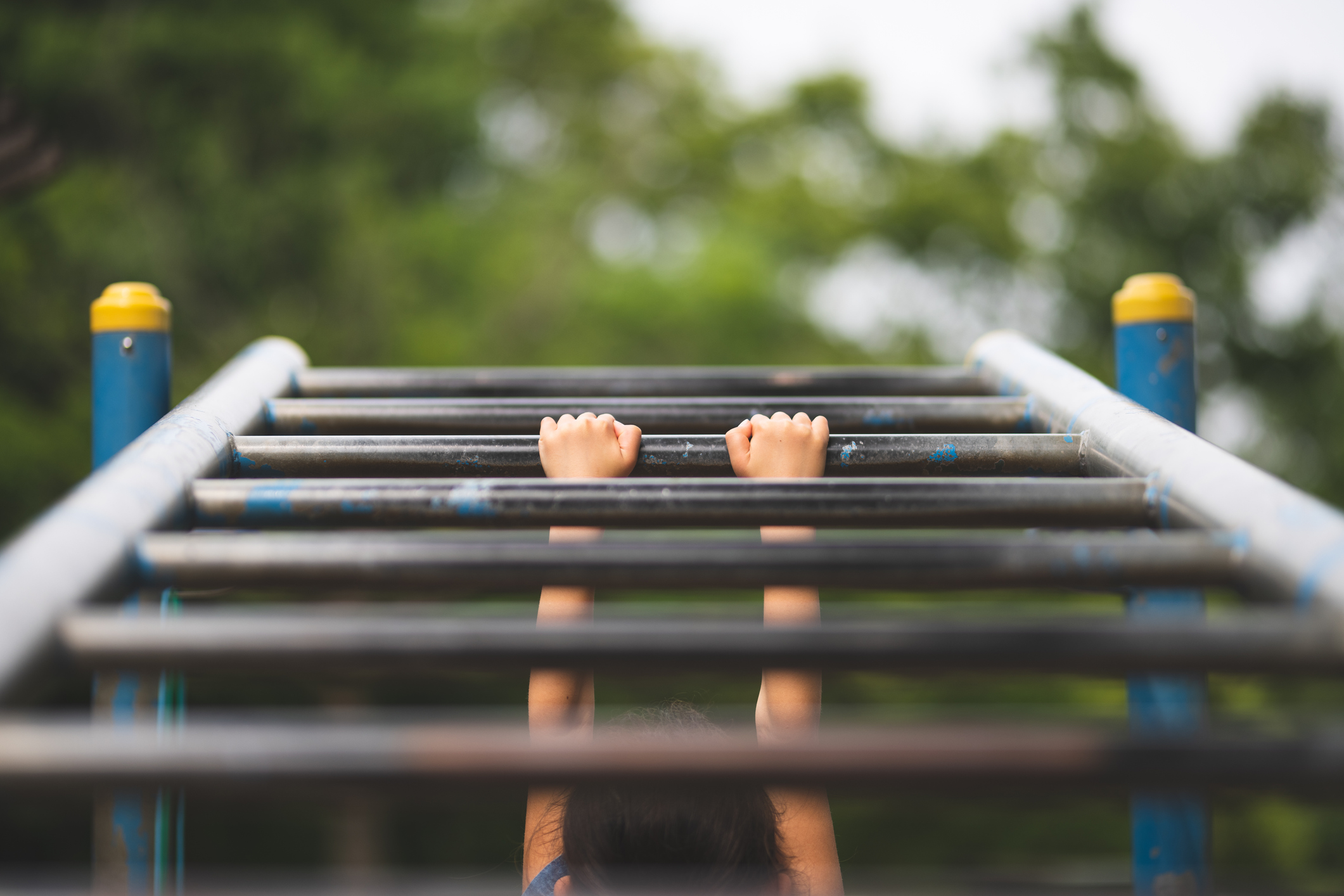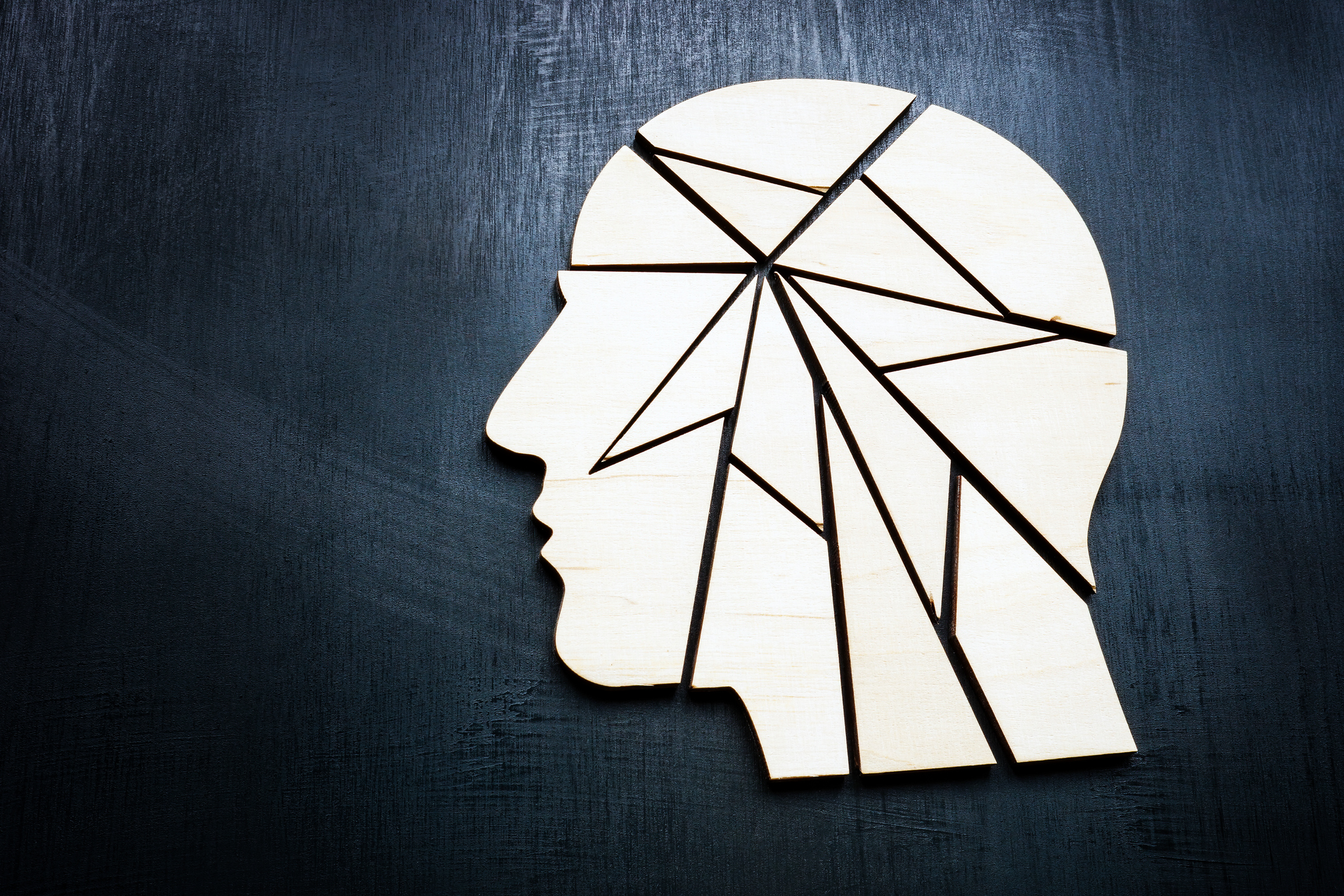Monkey Bars and the Normal Grief of Living Well
Alice D. Hoag, Ed.D.

In playgrounds, there used to be a structure called the Monkey Bars. I believe they’re too dangerous to be included in most public spaces anymore, but they were the test of endurance and strength (and bravery) for an entire century since their patented introduction on October 23, 1923.
For a child to cross the ladder of monkey bars, they climb up at one end, grab the first bar/rung with both hands and begin to traverse the bars. If they are seasoned (or simply strong), they hold onto the first bar with one hand, and immediately lunge for the second bar with their other hand. Here’s the catch: to move to the third bar, they have to let go of the first bar and swing their arm and body forward to grab onto the third bar…and then the fourth, and so on until the end.
Monkey bars are more than a child’s Mt. Everest; they are a metaphor for the grieving process each of us faces each day of our lives, if we live lives worth living.
Now, don’t get me wrong: I’m an optimist. I look forward to living each day to its fullest and being my better self in each decision I make and action I take. Yet from the moment of our birth, I am convinced that each day is filled with a series of opportunities to let go, to grieve.
Start with birth, for example. Prior to birth, we are comfortable and warm inside our biological mother’s uterus. There are gentle echoes of sound and light, but everything is peaceful and comfortable, if not a little cramped. The moment we are born, we are thrust into an environment with hands grabbing, twisting, poking and prodding us, thrusting things into our nose, mouth and eyes, stretching us, weighing us, measuring us; the sounds are no longer muffled through inches of water, they are loud and startling; the lights are no longer subdued, they are often bright and harsh; and the room temperature is undoubtedly colder than the body-temperature cocoon in which we were enveloped moments earlier, and it’s shocking to our pristine yet vulnerable skin.
This is grief. You and I both know that being born is an exciting start to a life poised for experiencing marvels and wonders; if the child does not exit the uterus, there is no life. They have to let go of the comfortable protection of the womb in order to grab hold of the next stage of life.
The same can be said for the infant’s stage of being held because they cannot walk. There’s a sense of security and comfort in always being in someone’s arms. Yet once they learn to toddle and then walk, they let go of that yearning to be constantly held in favor of exercising their own mobility. Letting go to grab hold of something new. That’s grief, even if the “new” is something positive.
When was the last time you played hopscotch (when you weren’t playing it with a child) or marbles or any other favorite game that occupied your time and attention as a child? You have most likely let go of most of those childhood games in order to lay hold of other interests more vital to your life today. That’s grief.
One more example relates to extracurricular activities. A child in elementary school is encouraged to explore any activity that piques their interest; they may choose several sports, creative endeavors, intellectual or academic challenges, or group activities. By middle school, children are encouraged to become more passionate and disciplined about practicing those things they have chosen. By high school, they must begin to let go of some of the activities which once brought them joy in order to focus on excelling at one or two of their more favorite interests. After high school, most people have a mere handful of activities and hobbies which they enjoy pursuing on a regular basis, the rest of which have been left behind. We have to let certain things go in order to lay hold of other things well. This, too, is grief.
Parents often do a disservice to their child when they attempt to protect their child from grief, loss, or experiencing discomfort. A child loses their bike, and the parent quickly goes out and replaces it with another. Their favorite pet passes, and the parent replaces it with a new pet. While the motive might be benevolent, they are preventing that child from learning how to navigate difficulties; they are not allowing that child to move forward on the monkey bars of their own lives. Learning to navigate difficulties is a major ingredient in building resilience, an essential adult life skill. I’ll address resilience in another post.
Someone asked me this week, “What’s at the end of the monkey bars?” This is my own opinion: I believe there is no end to the monkey bars while we are in these earthly bodies. At the last rung in our lives, we reach out and find there is a tunnel of light compelling us forward, beyond any more bars on this earth; our hand lets go of the final rung, and we find that we are being held tightly in everlasting arms.
When you find one rung of life extraordinarily difficult to let go of, or when you’ve let go of one rung but have not yet been able to successfully grab onto the next rung, that’s a time to seek wise counsel. I’d be delighted to come alongside and help with these transitions as you build resilience for the next.


